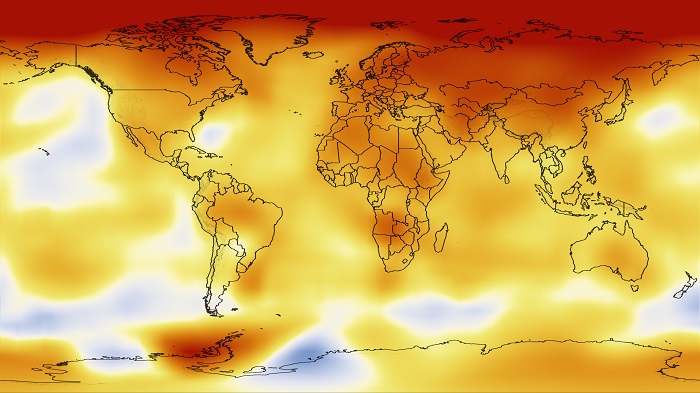-
Sea levels have been constantly rising since the year 1000
-
Island countries are vanishing from the world map
-
Increases in ocean temperatures give typhoons more chances to develop
Over the past 200 years global warming has become one of the most serious threats to human society. Dramatic increases of average temperature have already started to harm societies. In coastal areas around the world, global warming could increase chances of flooding, decrease the acreage farmable land, and create water shortages. These kinds of problems will affect billions of lives around the world, especially in poorer regions.
Consequences of global warming
Rising sea levels
The most obvious effect of global warming is rising sea levels. Sea levels have been constantly rising since the year 1000 with a steady rate of 0.6 millimeters per year, but since the industrial revolution, the rate has already tripled. Sea levels rising by 1 meter is enough to cause severe damage to coastal cities and island countries, yet experts say that within 200 years, average sea levels will rise between 1.5 to 3.5 meters higher than current measurements.
Flooding
If we don’t try to prevent sea levels from rising out of control, there will be severe consequences. First, there will be major flooding in delta plains around the globe, including Shanghai and the Nile, both of which are crucial economic powerhouses. The floodings could cause weeks-long shutdowns of trade centers affecting the global market. While this kind of economic damage is repairable in the long run, other effects of sea level rise are unfixable.
Sinking civilizations
As shown on international news, island countries located in lower latitudes have begun sinking into the ocean. These states, which were built on reefs and islands, will lose all of their lands within a few centuries. Put simply, these states are vanishing from the world map. People originating from those countries will be forced to move to other places nearby, and as history shows us, major groups of people immigrating from one place to another usually causes tension and destabilizes societies.
One of the most famous examples was when two Tuvalu citizens requested to move to New Zealand due lack of clean water and poor health conditions. Although the New Zealand court didn’t permit their immigration, the head of diplomacy and foreign affairs said that the NZ government might give out a new kind of visa to climate change refugees in the future.
Mega-storms
Another factor that would worsen flooding in coastal areas are typhoons. Increases in ocean temperatures give typhoons more chances to develop, with weather systems creating stronger winds and greater rainfall, and therefore potentially causing disasters that are unimaginable. These kinds of mega-storms will not only affect developing countries but also developed places around the globe.
Land loss and disease
Other effects of global warming are disease and loss of farmable land. As mosquitoes spread farther north due to increases in average temperatures in higher latitude regions, diseases such as malaria, dengue fever, and yellow fever will reappear in high latitude countries. Countries that already suffer from these kinds of life threatening diseases will have their situations worsen exponentially.
Due to rising sea levels, seawater is now far more likely to pollute farmable land. As sea water flows inland and contaminates fresh groundwater, salinization will cause large amounts of farmland to be abandoned. Other industries will be forced to move or adapt their products. This will cause regional famine and mass-immigration which could lead to tensions in society at large.
Trying to stop global warming
Allowing global warming to get out of control will cause destruction to coastal areas and put millions of people’s lives at risk. Fortunately, preventing global warming has already became an internationally shared goal, and governments and NGOs are putting tremendous efforts into environmental protection. For example, governments are restricting amounts of CO2 that factories and automobiles release into the air, and have begun banning the use of certain products like straws and other potentially hazardous plastics.
In the short term, governments will build levees to prevent flooding in vital regions, but this kind of infrastructure will be unable to keep floods at bay for the near future. The same issue is shared by many other technologies used by humans today, the technology of the past can’t protect humans for much longer. We need to think about incorporating nature into our society at large. That may be the only way to fight global warming.





0 Comments